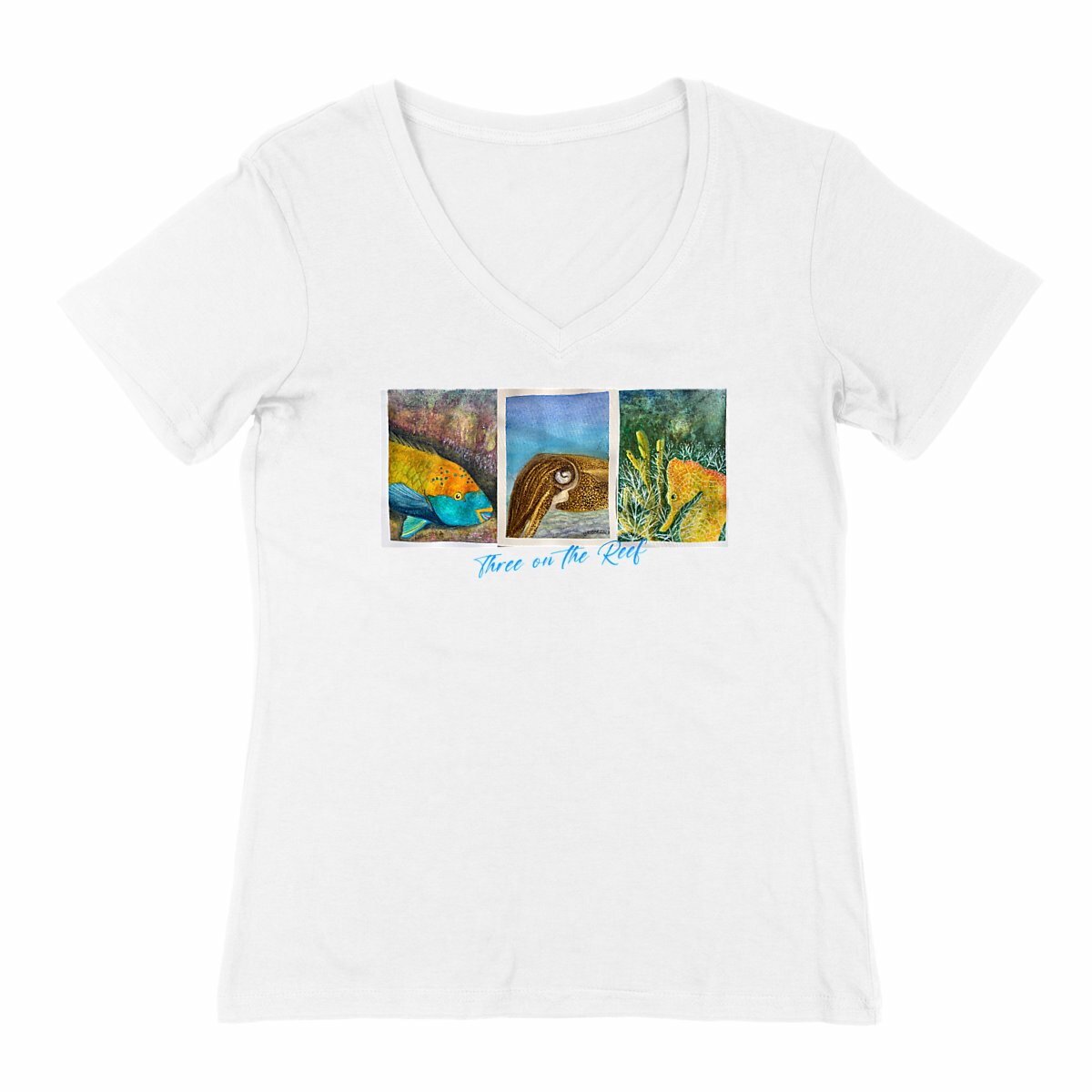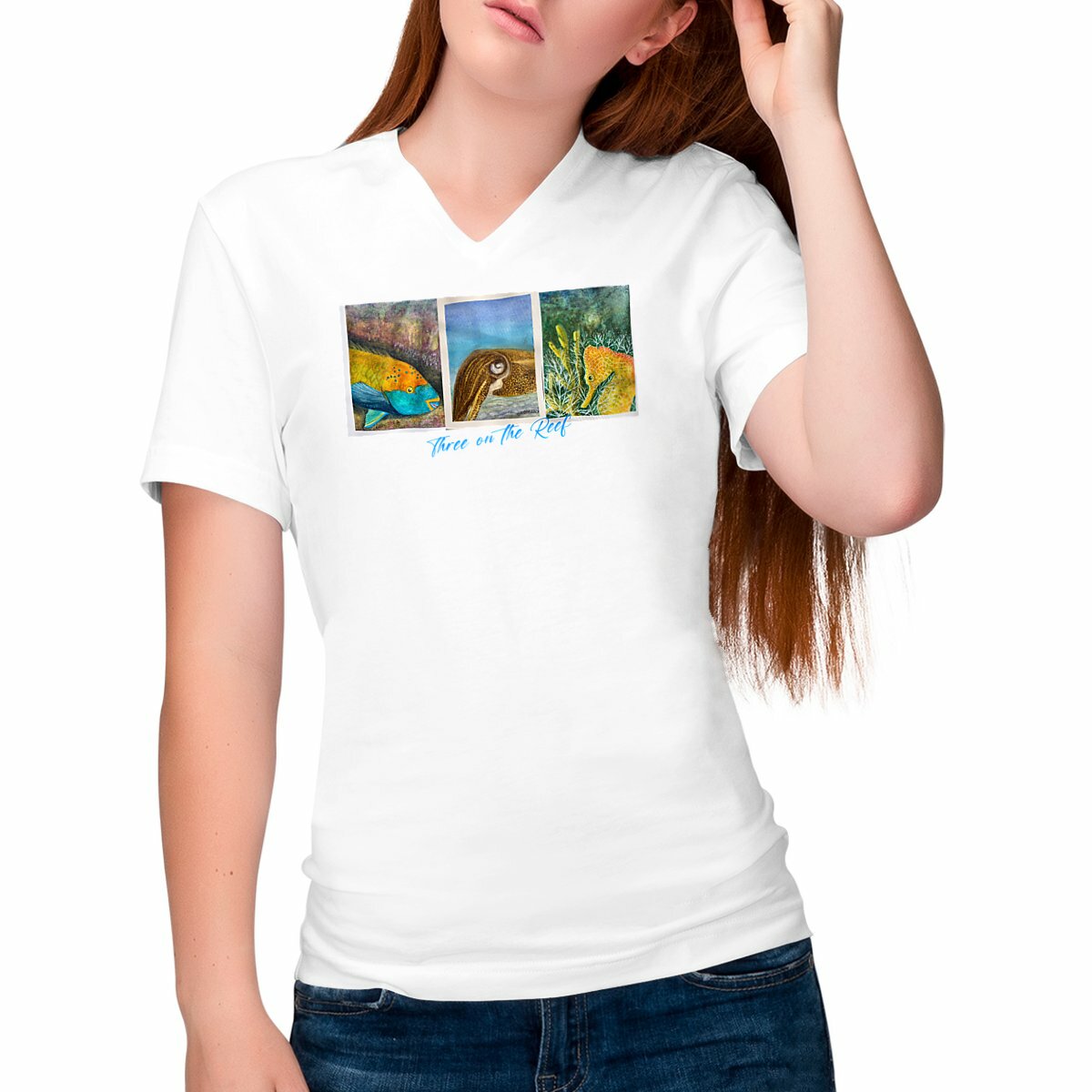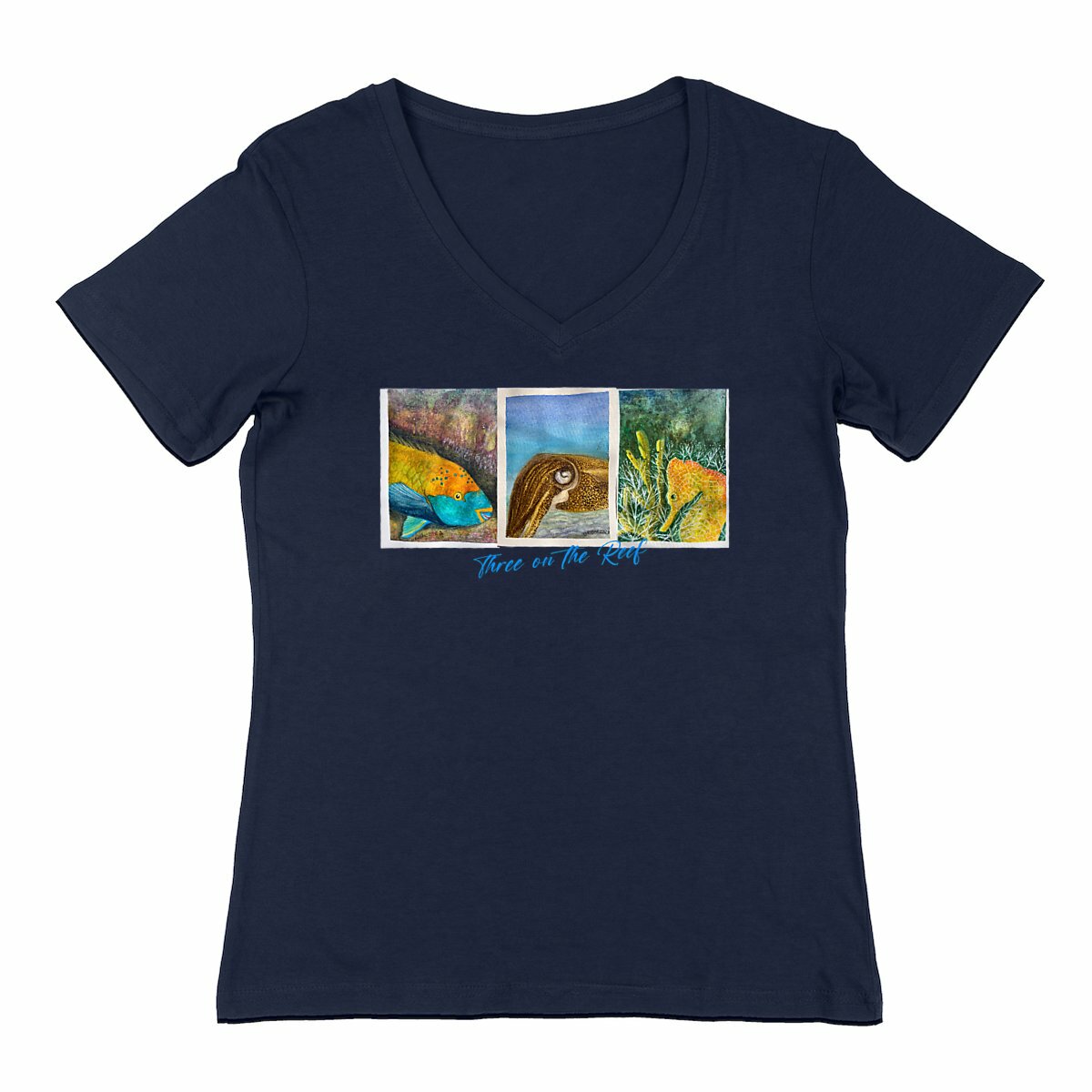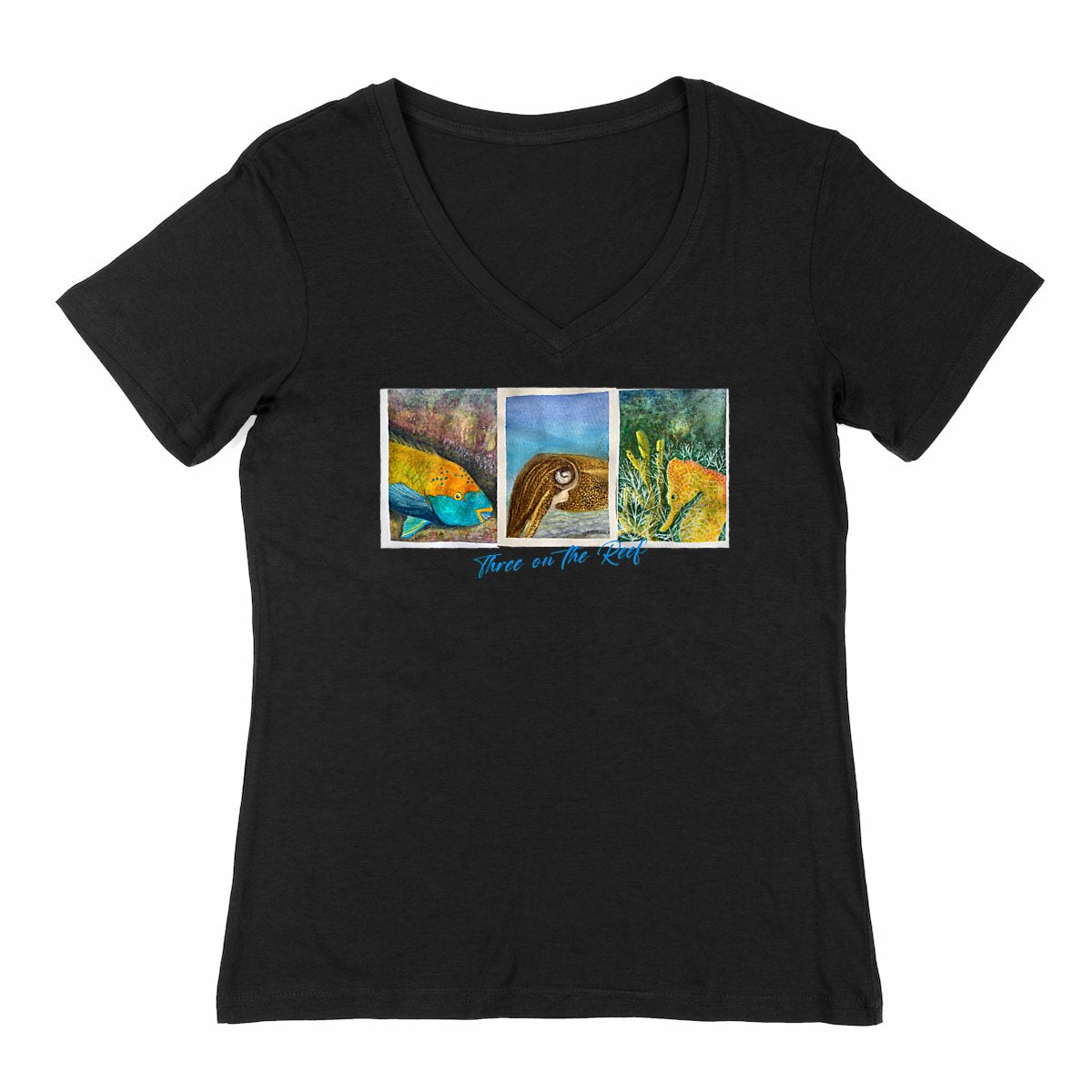TPOP
Three on the Reef
Three on the Reef
Couldn't load pickup availability
size chart
size chart
sizing
To get good measurements, lay the shirt (preferably the one you love) on a flat, hard surface, then if there are any creases, smooth them out as much as possible Height: measure from the highest point of the shoulder (top of the collar) to the bottom of the shirt.
|
Parrot fish, when feeding use their beak-like teeth to scrape algae off coral reefs, helping to prevent overgrowth that could smother the delicate coral structures. But at night the parrot fish creates a cocoon or sleeping bag of mucus around itself as a protective shield against predators while they sleep.
Squid though, have the remarkable ability to change color and even texture, thanks to their specialized skin cells called chromatophores. These tiny pigment-filled cells allow them to mimic their environment, making them virtually invisible to predators and prey alike just like the octopus.
The squid’s color-changing abilities are used not only for camouflage but also for social signaling and even hunting strategies. By altering their appearance, they can convey messages to other squids and potential mates. Reproduction begins with the male fertilizing the female's eggs with his sperm through a special arm called a hectocotylus. Once fertilized, the female squid will lay hundreds of gelatinous egg capsules, each containing dozens of developing embryos. The eggs hatch into tiny larvae, known as paralarvae, which grow into fully mature adult squid and the reproductive process is repeated again.
Seahorses. There are over 50 species found around the world, each with its own unique characteristics and habitats. From the tiny pygmy seahorse camouflaged in coral to the majestic lion's mane seahorse with its flowing fins, these creatures come in a variety of shapes, sizes, and colors.
But the most interesting thing about seahorses is that they are one of the few animal species where the male bears the unborn young!. Male seahorses carry the fertilized eggs in their pouch until they are ready to hatch.
These three colorful original water color painting by wildlife artist Dianna Rybak from the Artist's Notebook Collection is now found on this women's t-shirt.
Available from XS to 2XL - 100% cotton, in conversion to organic - Top quality product - 145 g/m2 - Side seams
Share








